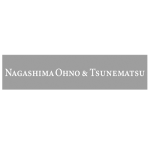On October 10, 2019, Koshidaka Holdings Co., LTD., listed on the First Section of the Tokyo Stock Exchange, (the “Company”) announced the dividend in kind, the distribution of property other than cash, to its shareholders of all shares of its wholly-owned subsidiary, Curves HOLDINGS Co., Ltd (the “Koshidaka Spin-off”). After the Koshidaka Spin-off , Curves HOLDINGS Co., Ltd is expected to conduct an initial public offering and list on the Tokyo Stock Exchange itself.
Although a stock distribution spin-off is considered to be an effective way to enhance shareholder value through greater transparency and to dissolve the so-called “conglomerate discount”, no Japanese corporation has ever conducted such a transaction. The primary reasons for this are twofold: (i) potential taxation imposed on the corporation that conducts the stock distribution in respect of the gain or loss arising from the transfer of the subsidiary; and (ii) potential taxation on the shareholders receiving the distribution in respect of the dividend and the gain or loss arising from the share transfer.
As part of various tax reforms undertaken in 2017, a qualified stock distribution spin-off was introduced, which allows for the exemption or deferment of the taxation described above. The five criteria for the qualified stock distribution spin-off are as follows:
1. Non-controlling Requirement:
Immediately prior to the stock distribution, the corporation that conducts the stock distribution is not a corporation that is controlled by another party.
After the stock distribution, the wholly-owned subsidiary is not expected to be controlled by another party.
2. Distribution Requirement:
All shares of the wholly-owned subsidiary are transferred. (Wholly-owned subsidiaries registered outside of Japan are also eligible.)
The shares of the wholly-owned subsidiary are delivered to each shareholder of the corporation that conducted stock distribution in proportion to the number of shares held by each shareholder.
No other assets (e.g. cash or cash equivalents) other than the shares of the wholly-owned subsidiary are distributed.
3. Employee Continuity Requirement:
Approximately 80 per cent or more of the employees of the wholly-owned subsidiary employed immediately prior to the stock distribution continue to be engaged in the business of the subsidiary.
4. Business Continuity Requirement:
Major businesses of the wholly-owned subsidiary are maintained after the stock distribution.
5. Executive Continuity Requirement:
Not all of the specified executives, which include executives in charge of management, will resign upon the execution of the stock distribution.
After the 2017 Tax Reform, the Koshidaka Spin-off is the first instance of a stock distribution spin-off in Japan. From now on, we can expect to see other Japanese corporations following the same path or even shareholders requesting Japanese corporations to conduct a stock distribution spin-off of a wholly-owned subsidiary. The future trend of stock distribution spin-offs in Japan should be carefully monitored.

|
Hiroki Ishii |

